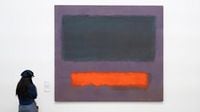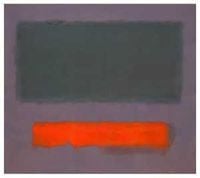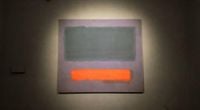In an incident that underscores the delicate balance between public access to art and the preservation of priceless works, a child visiting the Boijmans Van Beuningen museum in Rotterdam, Netherlands, inadvertently damaged a Mark Rothko painting valued at approximately €50 million ($56 million). The painting, titled Grey, Orange on Maroon, No. 8 (1960), suffered visible scratches on its unvarnished paint layer during what the museum described as "an unguarded moment." This event raises pressing questions about the responsibilities of museums in safeguarding their collections while remaining accessible to the public.
The Boijmans Van Beuningen museum, currently operating from its Depot while the main building undergoes renovations until 2030, had displayed the Rothko as part of the Lievelingen exhibition, which features seventy of the collection’s most popular pieces. The museum has not disclosed the identity of the child or their guardians and has declined to comment on who will bear the cost of the damage. Restoration experts are currently assessing the best course of action to repair the painting, with the museum expressing hope that it will eventually be displayed again.
This incident is not isolated; in 2011, visitors accidentally damaged another exhibit at the same museum, highlighting the ongoing challenges institutions face in protecting artworks from unintended harm. The damage to Rothko’s work serves as a poignant reminder of the vulnerability of art and the importance of implementing effective measures to protect cultural treasures. As museums strive to make art accessible to all, they must also navigate the complexities of preserving the integrity of their collections for future generations.
According to a museum spokesperson, the damage was described as "superficial," with small scratches visible in the unvarnished paint layer. The Rothko painting was hanging in the museum's Depot as part of an exhibition displaying a selection of "public favorites" from the gallery's collection. Sophie McAloone, the conservation manager at the Fine Art Restoration Company, noted that modern unvarnished paintings like Rothko's are particularly susceptible to damage due to their complex materials and the intensity of flat color fields, which make even the smallest areas of damage instantly perceptible.
As for next steps, the museum is currently investigating, in collaboration with experts, what the treatment for the painting will be. "We expect that the work can be shown again in the future," a museum spokesperson stated. Rothko's works have a history of high-value sales at auction, with the highest being $86.9 million for Orange, Red, Yellow in 2012, according to Art News.
The museum has previously billed visitors who have caused damage to artworks on display. In 2011, the museum asked a tourist who stepped on Wim T. Schippers' peanut butter floor artwork to pay for repairs. Sharon Cohen, a spokesperson for the museum at the time, was quoted by AD as saying, "It is normal procedure for people to pay if they damage art." This raises the question of whether the child’s guardians will be held accountable for the recent damage.
While some may argue that museums should take greater precautions to protect their collections, others point out that fostering a love for art in children is equally important. Maxwell Blowfield, writer and creator of the popular "maxwell museums" newsletter, remarked, "Every museum and gallery thinks hard about how to balance meaningful physical access to artworks and objects with keeping them safe. Accidents can still happen, but thankfully things like this are rare compared to the millions of visits taking place every day."
Rothko, who died in 1970, was best known for his color field paintings, which are characterized by large blocks of flat, solid color spread across a canvas. His works regularly fetch millions of dollars at auction, and the recent damage to Grey, Orange on Maroon, No. 8 has led to discussions about the implications for other institutions considering opening up their collections to the public.
Jonny Helm, a marketing manager at an art restoration service, commented on the challenges of restoring Rothko paintings, stating that the artist's mixture of pigments and resins makes the task particularly difficult. "Rothko works seem to have terrible luck – this isn't the first damaged Rothko we've heard about," he said, referencing a previous incident where Rothko's Black on Maroon was deliberately vandalized at London's Tate Modern gallery in 2012. That incident required 18 months for conservators to repair.
In November 2024, multiple screen prints by Andy Warhol were damaged by thieves during an attempted robbery of the MPV art gallery in Oisterwijk, adding to the list of recent art-related incidents in the Netherlands. Museums have different policies when responding to damage caused by children. For instance, in August 2024, a four-year-old boy accidentally smashed a 3,500-year-old jar into pieces at the Hecht Museum in Israel. The museum's response was notably lenient, as they did not treat the incident "with severity" due to the child's age.
The incident at the Boijmans Van Beuningen museum serves as a critical reminder of the delicate relationship between art preservation and public engagement. As institutions continue to promote accessibility and education in the arts, they must also remain vigilant in protecting their invaluable collections from the unpredictability of visitors, especially young children.






